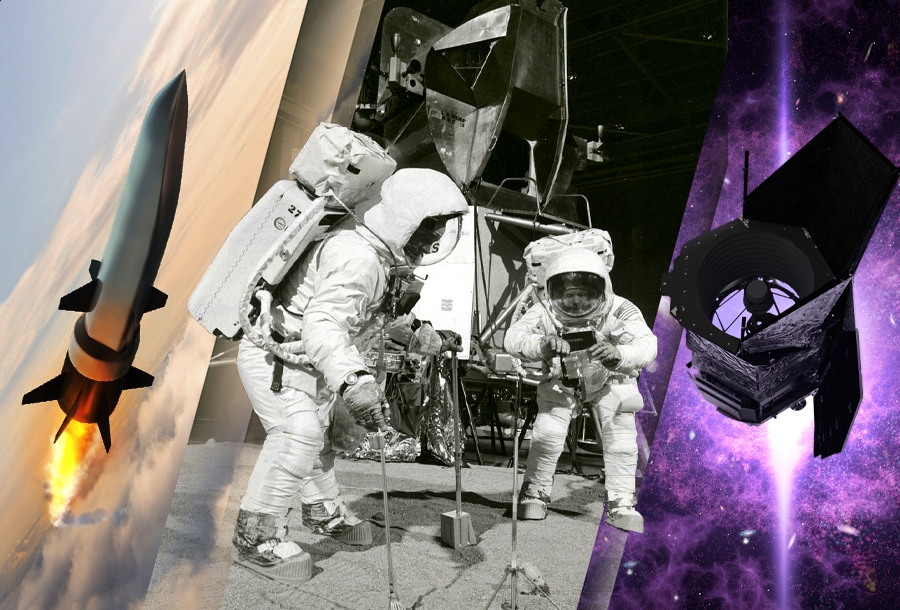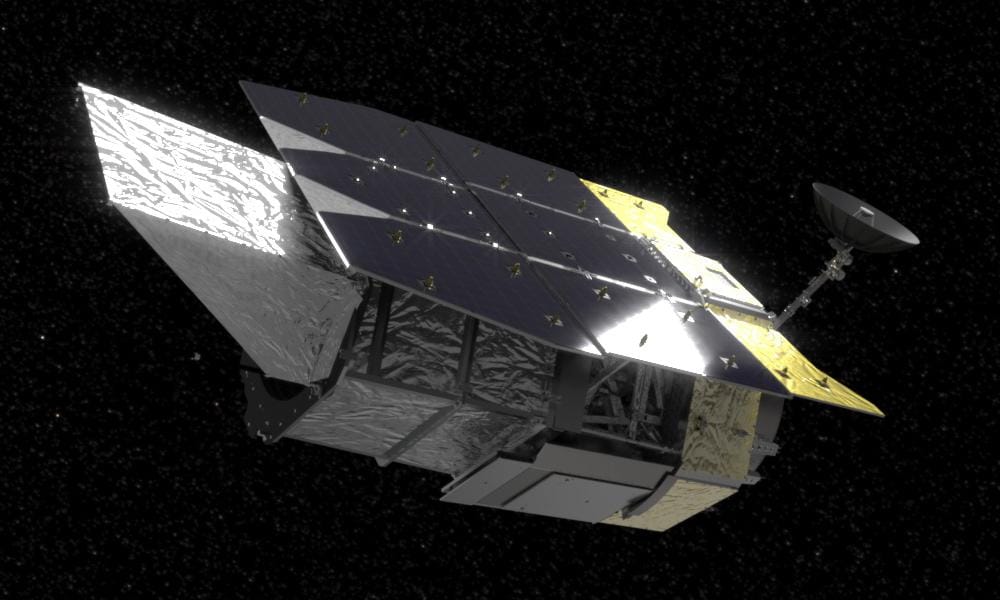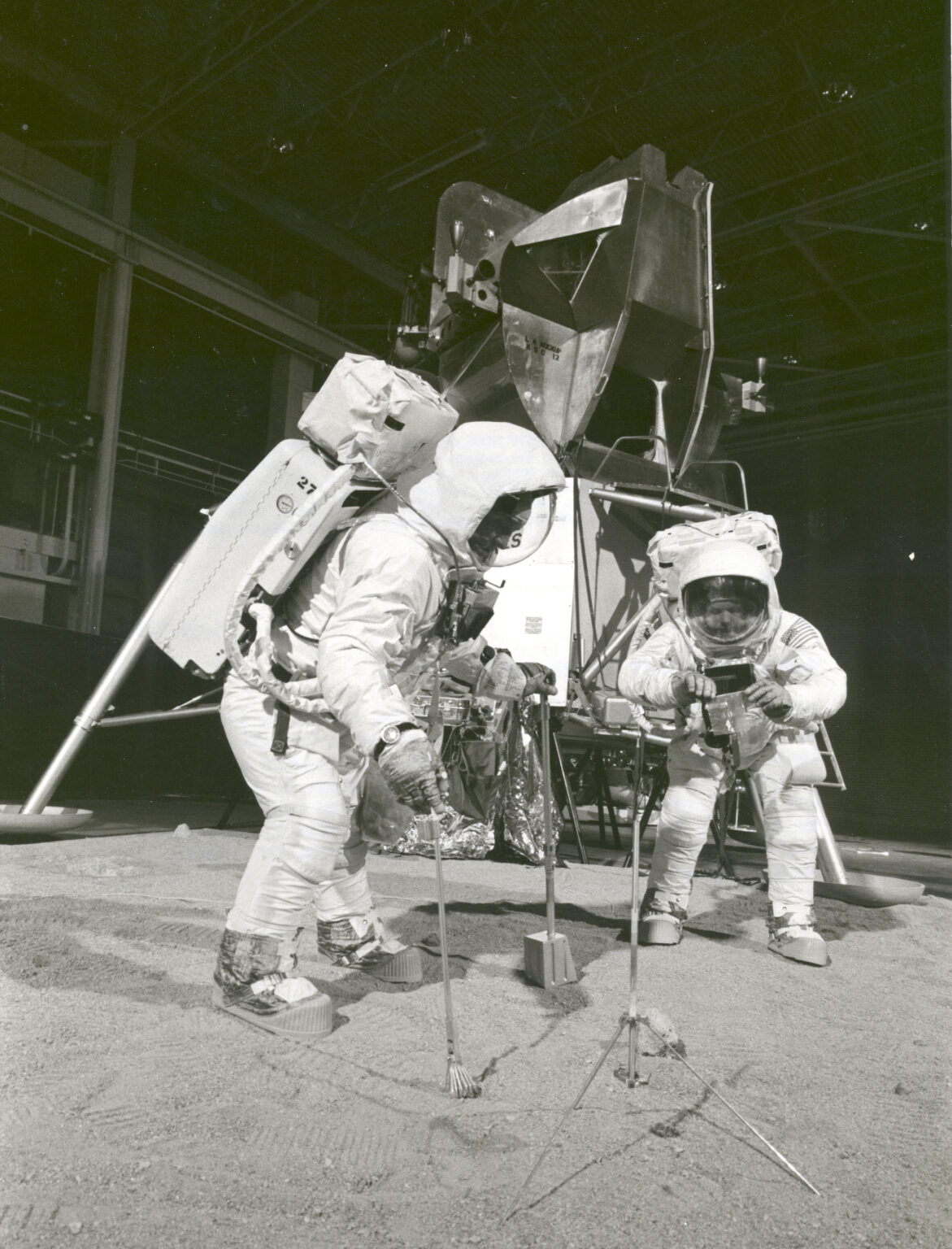Selection of the most interesting space news for breakfast: A cargo ship has undocked from the Chinese space station. ESA will finance the creation of a satellite that can improve the quality of weather forecasts, and scientists have shown how black holes turn stars into “spaghetti”.

- US military has completed tests of the HAWC hypersonic aircraft
- The cargo ship “Tianzhou-3” undocked from the Chinese space station
- NASA chose the Falcon Heavy rocket to launch the Roman telescope
- ESA to finance the creation of a low-orbit satellite demonstrator
- Microsoft reveals Azure Space Partner Community
- Apollo 11 Crew Trains for Excursion on the Sea of Tranquility (photo)
- Scientists showed how black holes turn stars into “spaghetti”
US military has completed tests of the HAWC hypersonic aircraft
Raytheon Missiles & Defense and Northrop Grumman announced the second successful flight test of their Hypersonic Air-breathing Weapon Concept, which can fly at a speed more than five times the speed of sound. Hypersonic missile Hypersonic Air-breathing Weapon Concept (HAWC) moves in the upper atmosphere — at an altitude of more than 18 km — at a speed of about 6,200 km/h.
According to the developers, there are obvious signs that China and Russia have been making great strides in the development of hypersonic weapons in recent years. This situation forced the US Department of Defense (DARPA) to rush to develop America’s first combat hypersonic weapon.
The cargo ship “Tianzhou-3” undocked from the Chinese space station
The Chinese cargo spacecraft “Tianzhou-3” undocked from the station “Tiangong” after completing all the tasks. This is another step in the construction of the orbital complex. Jiang Ping, Deputy Chief Designer of the cargo spacecraft team at the Beijing Mission Control Center, said: “In order to dock the Wentian laboratory module, we needed to make space for it – to undock the Tianzhou-3. The process was successful, the spacecraft successfully completed undocking and switched to flight mode in orbit.”
Market News

NASA chose the Falcon Heavy rocket to launch the Roman telescope
SpaceX has received a USD 255 million contract from NASA to launch the Roman Space Telescope. A Falcon Heavy rocket will be used for the mission. The Roman Space Telescope is designed to observe large-scale structures of the universe and study the influence of dark matter on galaxies. Another mission objective is to search for and obtain direct images of exoplanets.
ESA to finance the creation of a low-orbit satellite demonstrator
ESA will allocate 2.3 million euros to Thales Alenia Space for the development of the Skimsat demonstrator: a small satellite platform designed to operate in very low Earth orbit (VLEO). The Skimsat platform can change the status quo. The current plan assumes that its demonstrator will be launched into an orbit with a height of less than 300 km. It will use electric traction to compensate for the braking effect of the earth’s atmosphere and hold its position. The demonstrator is planned to be used to take pictures of the Earth’s surface. If the experiment is successful, a satellite designed to study the thermosphere will be created based on Skimsat. Its data will improve the accuracy of weather forecasts.
Microsoft reveals Azure Space Partner Community
Microsoft is expanding its relationships with space companies through the Azure Space Partner Community, an initiative unveiled at the Microsoft Inspire 2022 conference. “This is an ecosystem of space partners with exclusive access to technical support and scaling solutions,” Stephen Kitay, Microsoft Azure Space senior director, told SpaceNews.
The first partners of Microsoft in the field of space were Airbus, Amergint, Ball Aerospace, blackshark.ai, Esri, Hewlett Packard Enterprise, iDirect, Intelsat, Kratos, KSAT, Loft Orbital, Nokia, Omnispace, Orbital Insight, SES, SkyWatch, SpaceX, Thales Alenia Space, US Electrodynamics, Viasat and Xplore.
Interesting

Apollo 11 Crew Trains for Excursion on the Sea of Tranquility (photo)
On July 16, 1969, the crew off Apollo 11, including command module pilot Michael Collins, launched into history on a journey to explore Earth’s only natural satellite. Landing on the Moon’s Mare Tranquillitatis, or Sea of Tranquility, on July 20, 1969, Armstrong and Aldrin became the first people to walk on the Moon.
Scientists showed how black holes turn stars into “spaghetti”
In a new study, astronomers studied a supermassive black holes destruction of a star. They reconstructed and showed how these space titans pull in objects that dare to get too close to them. The study shows that a significant amount of absorbed material is ejected from the black hole, rather than absorbed by it.
Follow us on Twitter to get the most interesting space news in time
https://twitter.com/ust_magazine
